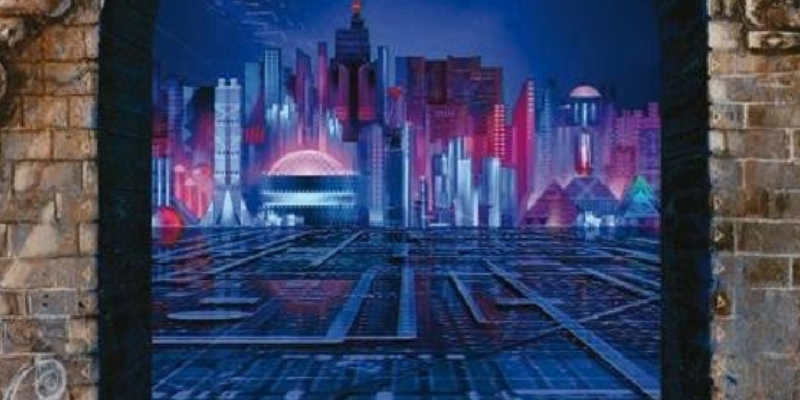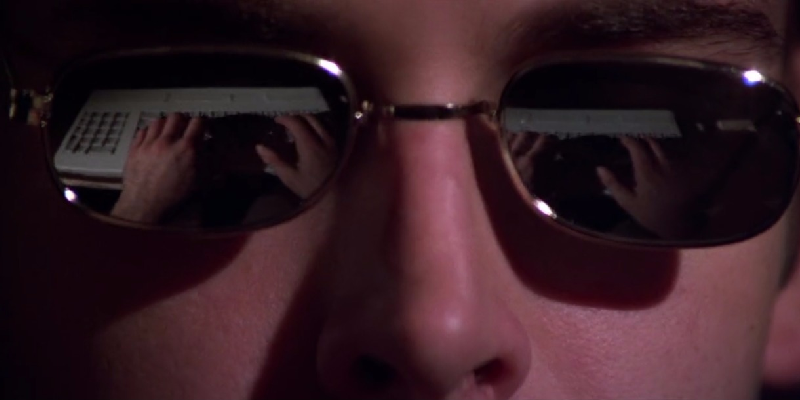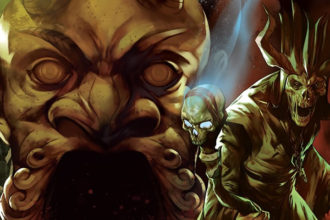Hackers, Ultra-Truth, and Tool Checks
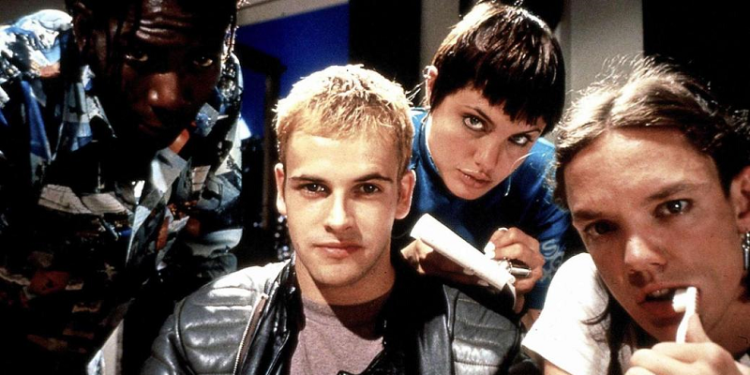
“Mess with the best, die like the rest” – Dade Murphy aka Crash Override aka Zero Cool
The year is 1995. The World Trade Organization is a fresh multinational entity. Barings Bank falls to shambles after Nick Leeson loses $1.4B in stock market speculation. The Tokyo sarin gas attack and Oklahoma City bombing take place. At the end of April, the National Space Foundation Network (NSFNET) stops receiving funding from the US government – marking the beginning of the wholly privatized internet. Then – on September 25, 1995 – one of the greatest movies of all time releases – Hackers. Hackers is probably in my top five Most Quoted Movies, and is definitely in my top five Movies I Quote to Enrage Peers in my Industry. Granted, that second category might not be applicable to everyone. Believe it or not, Hackers is an incredible film to take lessons from and repurpose for tabletop gaming. So, let’s talk about Hackers, ultra-truth, and tool checks.
Qualifications
I write about my day-job and my experience as it relates tabletop games every so often, but it’s worth repeating here before I start to speak to Hackers. For better and worse, I have some applicable experience. I’ve worked some meaningful security breaches, including ones that have seen federal prosecution. Let me tell you a few things.
First, unless you are the one actively engaged in the execution or prevention, this shit is boring. It’s mostly just a console window with text, or occasionally some slowly crawling graphs. Second, it’s not fast. This is painstaking work that occurs over hours. Actually infecting a system is tedious work that requires a ton of patience and persistence – not to mention restraint. If you move quickly or boldly, you’re in trouble. Third, hackers always – always – care more about getting your information than you will care about them not getting your information. Their job is to get that thing. Your job is to do a bunch of other shit that also includes stopping them.
In short, creating an accurate movie about hacking would be mind-numbingly boring. Even in the nascent days of the internet this holds true. Antivirus software starts getting serious in the early 90’s, and most viruses are not super sophisticated. Most just deleted or corrupted your data. This was more of a threat to businesses – thus beginning the narrative of the noble hacker.
The Deliverator
In 1992, a little book called Snow Crash was released. Snow Crash – despite the Stephensonian ending – is one of my favorite books. The book depicts a dystopian future where the global economy has collapsed, leading to the privately-held corporations and organizations to start buying up power and land. Everything is franchised and dispersed, sovereignty is a guiding watchword, environmental and economic refugees sail in floating barge cities, and people escape the real world by indulging themselves online. Boy, I’m sure glad our current society doesn’t resemble that at all. Ahem.
Snow Crash presents a visually-striking internet successor now completely driven by virtual reality. This includes the depiction of computer viruses. Much of the plot revolves a drug/computer virus/religious experience named “Snow Crash.” The namesake of the virus is a particular failure-state for old Apple Macintosh computers where image corruption occurs and causes the screen to display something similar to television signal static. A 3D model of a nude woman reading from a scroll precedes the actual transmission of the virus. How this virus seems to bypass all conventional methods of protection – on both the organic and computer levels – drives the story.
It’s easy to pick apart things that have not yet come to pass in this book – and all older sci-fi – but it’s important to remember we settled on the word avatar and got Google Earth in large-part thanks to this book. Sci-fi often drives technological innovation, for better and for worse. Hackers picked up some of the kinetic language of this book and others that are more traditionally – less deconstructionist – cyberpunk. It’s clear the film was trying to nail that aesthetic for the current, younger generation.
Criminals with a Conscience
Way back in 1986, Loyd Blankenship wrote the The Conscience of a Hacker – a guide to the pseudo-ethical responsibilities of hacking. Well, once you get over the self-importance of it all. Hacking wasn’t a new thing even in those days. Telecommunication hacking had been around since the 1950’s, at least. This was mostly done by the technical exploration of the phone system itself – listening and trying to replicate tones, reading technical manuals, etc. – and by social engineering. That’s not to say this was all legal. There’s a fair amount of falsifying identities and breaking and entering going on.
As we enter the 80’s, most of this sort of hacking – typically known as phreaking – revolves around the desire to skip long distance charges. On the surface, it seems like people who just don’t want to pay, and thus the charges of toll fraud are reasonable. However, the long distance rules were pretty insane back then. The charges were astronomical and in more than a few cases a building across the street from you could be considered long distance. On top of this, we have the prioritization of long distance traffic above all other types of traffic. For those of you paying even partial attention to the internet over the last twelve years or so, you’ll recognize this problem repeating over and over again.
According to The Conscience of a Hacker – commonly referred to as the Hacker Manifesto – hackers just want to learn everything they possibly can. Hackers are able to see beyond all racism, sexism, classism, and every other -ism to protect the world from the corporations and ultra-rich that would seek to exploit them. Defrauding the phone company or a bank is fine, those are industries are continually taking away what was available and making people pay a price. They are equal parts Gandhi, Robin Hood, and Einstein. Is it any wonder how we got where we are?

Hacker Collectives
Hackers had to be a tight-knit group in those days – not just for safety, but how else were they going to share information? There were a few underground publications – Phrack and 2600, for example – but that was about it. Bulletin board systems didn’t pop up until the late 70’s and didn’t really gain popularity well into the 80’s. Groups organized on loop-arounds and conference call numbers they accessed. These grew into hacker collectives – groups of like-minded individuals working together to further their stated goals. Once BBS systems began to proliferate and interest in computing iss brought into the mainstream, we see the codification of hacker collectives.
Blankenship was a member of Legion of Doom – a hacker collective purportedly focusing on the accumulation of knowledge and expansion of expertise. Of course, a lot of the members were hit in the hacker crackdowns for causing damage to various systems, so. Master of Deception was a competitor to Legion of Doom. MoD saw themselves as gatekeepers of hacking – believing that this much knowledge was dangerous in the hands of “the wrong people.” It’s no surprise that the groups engaged in games of one-upsmanship with each other. This led to rumors of a Great Hacker War between the two groups – something both side deny ever occurring.
Regardless, by the late 80’s/early 90’s a large number of federal raids – including a poorly thought out, and ironic, raid on Steve Jackson Games prior to its release of GURPS Cyberpunk – saw the arrest of many prominent figures in each collective. This creates a situation where we are on the cusp of the internet – again, wholly privatized in 1995 – without the guiding hand of the hacker old guard. It’s only natural we get speculative fiction like Hackers looking towards the future.
What is Ultra-Truth?
Hackers is obviously not a documentary… or interested in presenting the truth of how hacking works. Instead, it’s presenting what hacking could look like – if not for the last generation of hackers failing them. This results in the movie surpassing truth, skipping hyper-truth, and going right to ultra-truth. Ultra-truth is when something is a total lie, but it’s representing an ideal truth. It’s a truth dramatized to farce in order to become a symbolic truth. Taken at face value, it seems wildly incorrect – possibly even insulting to those who are familiar with the actual truth. Truths that are simplified in order to be better conveyed to the audience might or might not be ultra-truths. The truth doesn’t have to be easily digestible. It only has to be an ideal.
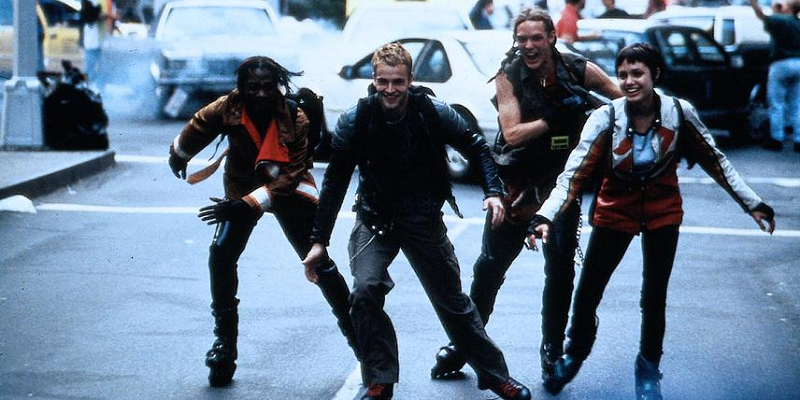
Phoning it In
For an example in Hackers, we need look no further than the phone booth scene that occurs during the movie’s climax. This is one of the most derided scenes in the entire movie, often causing people to proclaim it hilariously bad. The scene begins with our heroes, the teenage digital freedom fighters, rollerblading into Grand Central station to connect their computers to the Ellingson Mineral Company supercomputer – the Gibson – using the payphones there and acoustic couplers. The computer security officer for the company, Eugene Belford – I’ll get to his nickname in a bit – is perpetrating a salami-slicing scheme using a virus meant to cause an ecological disaster as a cover. This is as pure a case of benevolent hackers causing havoc to expose the truth and protect the world as you can expect.
All of the hacker heroes have custom boot sequences for their computers. Their computers boot instantly. For the record, I have something of a ridiculous computer and it takes an eternity to boot – upwards of five to ten whole seconds. They have wetwear: gear designed to help augment and enhance their computer experience. Each has a bevy of viruses able to instantly penetrate the entire Ellingson network, complete with sound effects, visuals, and the gimmicks made famous by the last hacker generation. That’s not all. Our heroes also have the help of two hacker celebrities, Razor and Blade, who host an underground TV show entitled “Hack the Planet” – an obvious imagining of the future of hacker information distribution.
The hackers navigate a digital city representing the file systems of the Gibson, flying around in space from “building” to “building.” All the while, Eugene shouts stuff like “deploy anti-virus,” “type cookie, you idiot,” and “send a flu shot.” It’s a very active game of cat and mouse, with Eugene able to discern the location of our heroes down to the exact phones they are calling in on in Grand Central station. He mobilizes the US Secret Service to track the kids down and arrest them. However, during the climax, something amazing happens: the phone booths the kids are in begin spinning. The camera isn’t panning around. The phone booths are literally rotating.
Immersion in History
Okay, I did say I’d get to Eugene’s nickname. His hacking handle – for of course Eugene is an evil hacker of the old guard – is The Plague. The Plague is a handle for one of the members of Masters of Deception, one who was never revealed or caught. Is this a coincidence? Of course it isn’t. Let’s look at the names of our heroes.
First, we have Dade Murphy’s two dope nicknames – Zero Cool and Crash Override. Dade is presented as a hacking wunderkind, and owes an awful lot to Kevin Mitnick. Dade ditches the name Zero Cool after crashing the New York Stock Exchange at age 11. Crash Override is the name he selects when he turns 18 and is able to use a computer again. The first thing he does is social engineer his way into a television station to take control of the programming. While Dade has his own progression of events, this is very much like the story of Mitnick.
Next, we have Ramon Sanchez, known as The Phantom Phreak, obviously a lift from the Legion of Doom member Phantom Phreaker. Not long after we meet him, we meet Kate Libby, or Acid Burn. The same Acid Burn that Dade encountered and battled while attempting, and failing, to take over the TV station. Acid Burn is just a great name, but it’s also a partial nod to Acid Phreak, aka Elias Ladopoulos, one of the founding members of Masters of Deception. Paul Cook – Lord Nikon – is named more for his unique photographic memory and how cool that would be rather than any particular hacker. However, Cereal Killer’s real name is Emmanuel Goldstein – the name of the publisher of 2600, itself taken from Nineteen Eighty-Four – one of the aforementioned underground hacking magazines.
It also stands to mention Dade and Kate engage in a constant game of one-upsmanship, not unlike the “Great Hacker Wars.” Well, it’s different in that it didn’t involve blatant racism, but I digress.
The History of the Future
When we break it down, Hackers is a film about the uncertainty of computers, personal information, and the ever-present threat of bad-faith actors. It’s a look at how those who once had the keys to the kingdom locked the gate and began selling off the real estate as fast as they could. When you look at it this way, Hackers was fairly prescient about all manner of things – though it had its fair share of misses. The film is suddenly looking a lot more deep and nuanced than you thought, right?
Anyway, this is all crucial to know because Hackers treats all of this information as a known quantity and it informs the story of the film. Knowing the history of hacking really helps sell the ultra-truth of the film, as it takes what came before and acts, “What If?” This sort of serious treatment matters within the world, especially knowing this stuff was a mishmash of real world history and speculative cyberpunk futurism. We’ll revisit this again when I eventually talk about Altered Carbon. I’ve spoken about this before, though, and it shouldn’t be a shock that I still love it when it’s done here. The content and story are silly, but it doesn’t matter because it’s also very serious.

Hackers, Ultra-Truth, and Tool Checks
Even if you disagree with everything I’ve said above – and I like to believe you won’t – we can probably agree on one thing: the depiction of hacking isn’t boring. If you take anything from this movie for your tabletop game – and you can do worse than taking its history, world-treatment, and speculative fiction – then take this: make your skill checks ultra-true. It might not be accurate, but it won’t be boring.
While there is probably a subgroup of players out there really into the accuracy of a smithing tools check, I’m not that dude. I love crafting, but I want it to work in service to the players and not vice versa. If that’s not your jam, I ain’t hating. However, there’s a reason why so many video games often opt for the hyper-true version of crafting and gathering. It’s immediate and visceral. I say hyper-true as this cleaves more closely to reality than ultra-truth. No one is disputing the mountain of gold ore coming out of the side of a mountain isn’t true, not to mention economy destabilizing. It’s just that taking some ore, something to refine the ore, and bashing it with a hammer at a forge ain’t exactly the craziest thing in the world.
Hackers goes that step further into all out ultra-truth. Deploying a virus? Literal rabbits running across the screen because the virus is multiplying, like bunnies, and the person contesting you is shouting out “flu shot!” to his much-abused underling, all as your phone booth rotates around you and ominous red lights flash at the site of your intrusion. For someone involved, and others observing, it’s way more exciting to be participating in this than literally sitting at a computer or going through trash.
Activity over Authenticity
In Dust to Dust, we regularly made crafting the centerpiece of our games. The climax of one of the short-run stories often involved smithing, scrivenery, alchemy, or other crafting skill. While all of the skills followed the Ultra-Truth Rules, smithing in particular benefited from this adoption. Smithing became a tense game of life or death more than once, requiring the participation of myriad players to help complete a given project.
One of the game locations was Tontura, an upper plane reachable by traveling across the interplanar space known as the Road of Black Stars. In Tontura exists the Sacrificial Forge. It is here that extraordinary feats of smithing are possible, including crafting or destroying sentient weapons. Since there were only a set number of sentient weapons allowed in the world at a given time, destroying one of the old weapons to create a new weapon was required. It just so happens that the players wanted to do this.
In order to do so, the smiths involved had to shatter the weapon, causing the vengeful soul within the weapon to be free to wreak havoc. All the while, the proportions of things were distorted, as the players visited in a month they had never visited in before – a month where the Titans visited. The players had to worry about footprints that were cut from the stars, drops of blood from the Titans becoming sentient and attempting to lure them into the stars, and dealing with the flayed bits of soul trapped in the now-giant forge leftover from the smithing process. Oh, and smiths had to go into the forge to perform a series of tasks to break and reforge the weapon, while dealing with the numerous souls that had been lost in the forge either from broken weapons or failed attempts at smithing.
Highlighting the Understated
Tools are useful in D&D 5e, but they aren’t flashy. You can easily change this in order to bring them to the forefront of your narrative and give players a chance to engage with what should be crucial parts of their characters. The act of using the tools should be exciting, dangerous, and carry the same thrill as using any other skill in a meaningful way.
Do that by considering making tool use an ultra-truth. Is your sorcerer working on a genie-powered magic staff? Well, it’s probably going to involve an awful lot of symbolism and bargaining during the actual creation process. Cooking? You can bet your sweet rolls that it’s Medieval Hell’s Kitchen up in this mofo. Scribe work? Remember that episode of Futurama where the big brains first appear? It’s gonna be like that.
These are obviously just shorthand ideas, but I think they get the idea across. Believe in the rad. Surrender to the action. Give into Hackers. Give in to ultra-truth.

